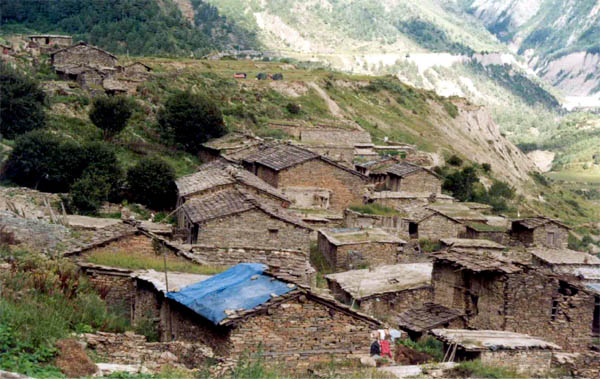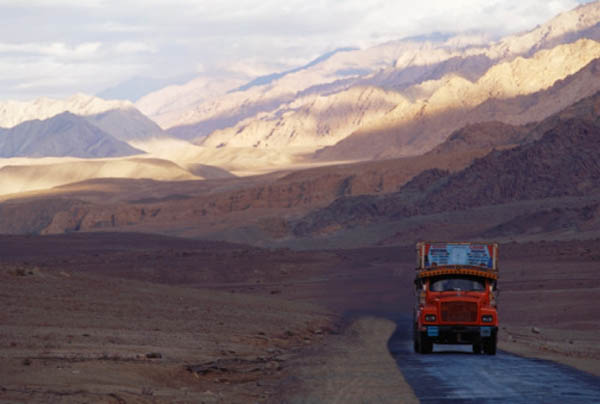Dec 28, 2025
Dec 28, 2025
It is said that the Himalayas are eroding at a faster rate thereby upsetting the carrying capacity of the rivers and leading to floods. The enhanced rate of erosion has been ascribed to the hacking of forests in the highland, as a result blames and counter blames are often exchanged between the people of lowland and highland. The highlanders however, have another story to tell. The people of the state of Uttarakhand were so much aroused by the hacking of trees that a massive 'hug the trees' ('Chipko') movement was launched in 70s when the womenfolk joined hands and hugged the trees with a wow to get hacked before the axe falls on the tree. The reasons behind this movement were many. One of them was to plead with the government to not to allow their forests to be hacked for sports and match industries and the like and the other was to allow the locals to use the forest produce and grazing rights. In the same context it was said that the hacking of trees will enhance the rate of erosion and increase the influx of sand and silt in the rivers. Well the government came out wit a strict Forest Act, which prohibited hacking the trees for any purpose. The movement did eulogies the trees. But did it stop the erosion? The answer is NO. Thereafter voices were raised that the change of land use, that is increased construction activity in the newly formed state of Uttarakhand is causing the erosion and creating bald patches on the hill slopes. Whether the problem is man made or it is natural is the crux of this article. The sediments carried by the rivers of Himalayas carry a wealth of information. Of late it has been possible to decipher this information and establish the source of the sediment and its age as well. Scientists use complex techniques like Thermoluminesence dating to establish a chronology of events. R.J. Wasson of Charles Darwin University, Australia, N. Juyal, M. Jaiswal, M.M Sarin and A.K. Singhvi of Physical Research Laboratory, Ahmedabad, P. Srivastava of Wadia Institute of Himalayan Geology, Dehradun, M. Mculloch of Research School of Earth Sciences, Australian National University, Australia and V. Jain of School of earth Sciences Macquarie University, Sydney, Australia joined hands to find out whether the problem is man made or otherwise. They chose the Alaknanda sub-catchment of Upper Ganga catchment in Uttarakhand, India. Their study was published by the Journal of Environmental Management (Elsevier) in 2008. Specialists of fluvial regime (river deposits) like J.D. Ives, B. Messerli and E. P. Eckhome postulated that the increased floods in the Gangetic Plain in India and Bangladesh were due to deforestation. Even till 2004 P.M. Blaikie and J.S.S. Muldavin, American Geographers continued to support the postulation of earlier workers. So much was the impact of their theories that a theory of Himalayan Degradation finally emerged and embedded in public policy in Nepal, India and China. Himalayas are world's youngest mountain chains. They are an offshoot of a great collision that took place some 20 million years ago between the Indian Plate and the Tibetan Plate. Even now the Indian Plate is constantly going under the Tibetan Plate and as such the Himalayas are still rising. The continuous subterranean movement makes them a fragile mountain, prone to erosion. The rocks and the surface soil need to settle and form an angle of repose. A minor change in the angle due to any reason can make the mountain slide down. Result is a landslide. A landslide is a process of mass wasting. The waste material begins to move down the slope and ultimately find its way to the river below. The Himalayan streams move pretty fast because of the steep gradients. The material that reaches the rivers is carried by them. The flow of the rivers becomes slack in the plains and it clogs the channel. During monsoon when the volume of water in the channel increases by many folds the clogged channel overflows its banks and floods the area. The propagators of the theory of the theory of Himalayan Degradation believed that the deforestation is leading to mass wasting. However, those days the technology had not advanced so much as of now. The scientists did not have access to certain tools which are being used now. Thus Wasson and his co-workers have been able to unravel some hitherto unknown facts. Areas in the extreme north above the tree line belong to Tethyan Sedimentary Series. They preserve some of the best sedimentary records of the ancient Tethys Sea. South of this is the higher crystalline Himalaya which has peaks rising to 8000 m and above. Much of this area too is above the tree line but the one lying below the tree line has some of the best forests. Slopes are very steep; erosion is rapid because of glaciation and snowfall. It is natural that if the source of sediments carried by the river can be located, much of the problem can be resolved. Because if the sediments are from the areas above the tree like, the cutting of trees can not be responsible for enhanced erosion. A study of the sediments at the mountain front brought by the Ganga shows that they are from the higher crystalline Himalayas and lesser Himalayas both. Nearly 70% of the sediments of the lesser Himalayas are from within 30 km of the Main Central Thrust. A small but as yet unquantified proportion of the present river sediments are derived by erosion of topsoil claim the researchers. A study of the sediments brought by the rivers in the past 63000 years indicated that nearly 30% of the sediments were deposited during the 1970 floods. Refined dating of the sediments also proved that a similar flux of sediments had occurred 800 years ago as well, that was much before deforestation. Enhanced erosion 800 years ago could have taken place due to excess rainfall and/or an earthquake. The study also found that the sediments of 1970 episode of heightened erosion were derived from higher Himalayas, where the slopes are most steep and rocks on them are sheared and fractured. This area has been experiencing fastest uplift since the time when the Himalayas started to rise and is prone to severe landslides. This is an area of heavy rainfall and even snow precipitation. Incidentally he magnitude of landslides is such that it leads to deforestation. Wasson and his co-workers are convinced that deforestation does endanger the slopes and makes them vulnerable for landslides. But how much man made deforestation in the past, i.e. much before 1815 was responsible for landslides and enhanced erosion is anybody's guess. The slopes of higher Himalaya need to be afforested to check erosion is their recommendation, but the terrain may prove to be too challenging for the job. They also recommend a thorough study to probe the role of human agency in the erosion and sediment transport. Using geochemical sediment source traces and studying the complete chronology of forest history and land use in the area the actual role can be worked out. In order to develop the Himalayan states, especially the new founded Uttarakhand such systematic studies are important, else the upland-lowland debate would continue endlessly. 
Landslides in higher Himalayas (Garbayang) (Image curtsey N. Juyal et al)
In their study, the researchers studied 13993 square kilometer of Alaknanda River catchment. This area had gone through terrible floods in 1970 (Belakuchi floods) which caused mass wasting and sudden transport of enormous quantity of sediments through the tributaries to the main river, Ganga. These floods were one of reasons for the famous 'Chipko' movement mentioned earlier. In order to establish the relationship between the cutting of trees and enhanced erosion, the records of deforestation were evaluated. Thereafter next step was to determine the source of sediments carried by the rivers over the last 6000 years. During the Gorkha rule between 1803 and 1815, large numbers of trees were hacked in the Central Himalaya. However, the rate of felling of trees increased multifold in the post 1962 period. The sudden strife at the border led to rapid road construction and this facilitated commercial logging.
Truck on Leh Road, Srinagar, Ladakh, India (Gettyimages.com)
19-Jul-2009
More by : V. K. Joshi (Bijji)